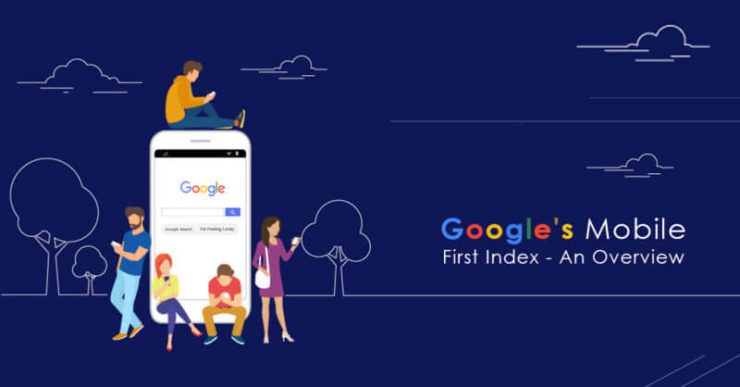SEO is about helping people reach what they desire to get online. It was all on the desktop until the miracle happened and whew! The mobile revolution had just begun. SEO was about to see a dramatic twist with mobile technology.
As we can see social media has revolutionized the marketing strategies and now we use the services of a social media marketing agency to handle all our marketing needs, same is with the SEO after mobile revolution.
Mobile became a dominion and SEO changed forever. There was a constant upsurge in Google’s experimenting theories and improvements like Panda and Penguin, White and Blackhat concept but the impact of the mobile revolution could not simply be ignored.
Google grasped the idea of generating a platform for mobile sites and rolled out its first index in November 2016 as its ranking systems were based around the desktop.
When people extensively started using Google on their mobile devices, mobile-first indexing was introduced.
MOBILE FIRST INDEXING CHANGED THE WORLD
Mobile is the fab now.
How come?
- 3 out of every 5 searches happen on mobile and it has outpaced desktop in searches.
- Mobile searches happen by people on the move, just about anywhere or away from home.
- More involvement on mobile than desktop.
So what’s the effect of mobile-related searches?
As per Digital-Stats, 75% of mobile searches produce GOOD CONVERSIONS and that’s a whopping 90%. In fact, the revenue of millions in businesses across the world is generated by mobile searching leads.
The official post from Google Webmasters says their algorithms will primarily use the mobile version of a site’s content to rank pages from that site, to understand structured data, and to show snippets from those pages in their results. They will also build an index from mobile documents.
While they’ve already begun experiments to make them index mobile-first, mobile index ranking will affect to rank your site in Google.
So a site optimized for mobile will rank even on desktop and if it’s a bad performer, both mobile and desktop rankings will sink. Frankly, mobile is a priority and it’s important now to focus on mobile.
BUT……to rank well on Google with the mobile-first index, A RESPONSIVE MOBILE-OPTIMIZED SITE is required.
The mobile-first index favors mobile-friendly content and Google wanted the user-friendly observation of content on your page with easy browsing, zoom, and interaction with buttons.
What a mobile-friendly site has?
- Responsive design – Ease of web browsing by the design and size of a website that fits on the mobile screen.
- Site speed – Speed of browsing.
- Avoiding interstitials – Bad pop-ups to be avoided.
Responsive design is a big must-have. It’s Google’s preferred type of site design, and it’s safe to say that responsive sites will do really well in the mobile-first index.
A great mobile site is appealing and navigates easily on a mobile device. The site must be fit for all gadgets. So it’s important to optimize your content for mobile.
While many sites claim to be mobile-friendly, but their content is not. The actual mobile-friendliness amongst site differs a lot from theory and content is one strong example. Your mobile visitors should experience the same good content they get on a desktop.
Simply to improve our ranking on mobile-first indexing means how to get more traffic to a mobile site.
Mobile-first user mindset is what we have to follow because the world is spending more internet time on a mobile device than desktop and Americans lead the race. All their searching and interacting is happening in a mobile context.
Improve Your Rankings with Mobile-First Indexing
Some points to make sure your mobile visitors happy when they scroll a mobile responsive page:
- Judge your content: A lengthy piece of article that hardly fits a mobile page is a bad choice. Shorten it the way people prefer to read it because large articles on mobile are avoided.
- Make it readable: Short lines with some fruitful info is better than long stories because….BECAUSE a lot of readers are mobile readers and they all want easily readable text.
- Make it attractive: Don’t strike by stereotype content. Audio and video mix blends well in the mobile environment because interesting content gives a good experience to mobile users.
- Easy on multiple screens: Mobile content means it must also be presentable on a tablet, desktop or laptop. It should be presentable in toto. Using HTML5 is a better option than Flash as iPhones don’t support it but don’t worry, you can find an SEO Company to make your site mobile responsive.
What if you don’t have a mobile site?
NOTHING? ERR…A slight change here. Google will use your desktop version to rank your site BUT will have a bias attitude against such site.
Since Google has prioritized mobile-friendly content and indexes them first, your mobile-unfriendly site will take a hit.
THIS MEANS:
- Your site will fall short of rank.
- It will not show up on Google’s search engine.
- It will route it’s visitors and expected customers to other mobile-friendly sites.
Consequently, your site is being judged on its mobile friendliness or lack of it.
I think the better idea is to move to a mobile version now for better indexing of your website.
BIO – I am an SEO Expert and have an interest in writing innovative blogs on the newest and motivating topics. With this, I want to grow my knowledge to educate the clients on various marketing topics. I also wish to work for Jeewangarg, a well-known SEO Company in Delhi, India that offers the finest SEO services with the help of their best mavens.






 United States
United States United Kingdom
United Kingdom India
India Canada
Canada Singapore
Singapore















![10 Benefits of the Internet of Things You Should Know [2025]](https://www.appstory.org/wp-content/uploads/2025/03/ATS-10-Benefits-of-the-Internet-of-Things-You-Should-Know-2025@2x-80x60.png)




















